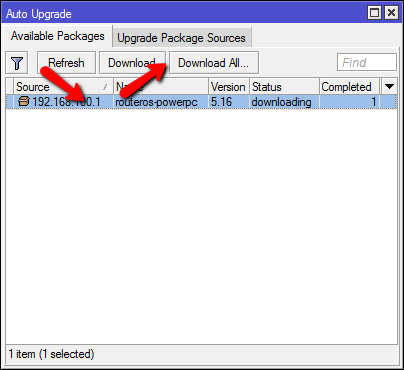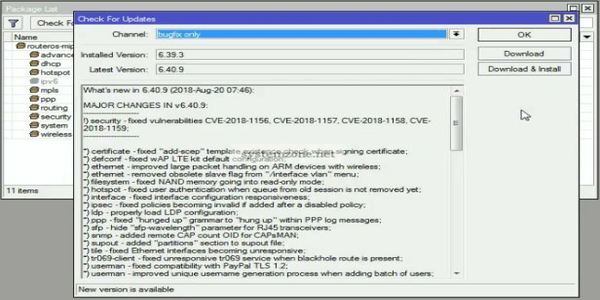

- UPGRADING MIKROTIK ROUTEROS INSTALL
- UPGRADING MIKROTIK ROUTEROS UPDATE
- UPGRADING MIKROTIK ROUTEROS UPGRADE
The command is very simple: > system routerboard upgradeĭo you really want to upgrade firmware? Ģ1:56:31 echo: system,info,critical Firmware upgraded successfully, please reboot for changes to take > The newer firmware file is packed inside the npk file and will be available after the RouterOS upgrade. That firmware should be upgraded after the RouterOS upgrade. Just be patient.Įvery RouterBoard device has its own BIOS or firmware.
UPGRADING MIKROTIK ROUTEROS UPDATE
The update and reboot process lasts about minute. To reboot the router from the command line, type the command: > system reboot
UPGRADING MIKROTIK ROUTEROS INSTALL
npk files on the local disk and install them. During the shutdown process, RouterOS will check for the new. When it’s finished, we can see all downloaded packages: > file print where name~".npk"Ġ routeros-mipsbe-6.45.8.npk package 11.5MiB mar/09/2020 21:48:44ġ ntp-6.45.8-mipsbe.npk package 260.1KiB mar/09/2020 update process will be finished after reboot. Status: Downloaded, please reboot router to upgrade it We can now update our router with the following command: > system package update download This is very useful for the scripting process. We can see all those values with the get sub-command: > :put Ĭhannel=bugfix installed-version=6.42.6 latest-version=6.45.8 status=New version is available The result of the operation will be held in the status variable. It will read the local version and then fetch the version of the update package.

This command will initiate the connection between your router and the Mikrotik’s update server. The command that will check for the update is > system package update check-for-updates We chose the update branch, similar to the WinBox GUI. The command to setup channel is > system package update set channel=bugfixĪnd that’s it. The command to check the current names of the channels is (the question mark will not print on the screen): > system package update set channel=?īugfix current development release-candidate You should choose what will best fit your needs. Sometimes you can face unpleasant surprises with the current (or stable) versions. As you probably know, those channels are:Īs you read in my previous post, I prefer the long-term versions. The first step is to choose the distribution channel. This command is related to the router update process. Under this command we have the sub-command named update. I will not recommend you to use Telnet access anymore. You can use the built-in terminal, the SSH access or the local console of the PC version. This means that you can also write the update script.Ĭontrary to the scenario with your local update source point, if your routers are independent to each other and on the separate Internet links, you will want to use the different process to update them all at once. The good news is that you can use the magic of the command line to perform such task. In case that you have larger number of devices under your control, you will probably want more automation. That version is rarely updated and contains only the major bug fixes.

This is a very easy task if you install only the long-term versions. If you administer only a few MikroTik devices, you can manually update them one by one using the WinBox tool.


 0 kommentar(er)
0 kommentar(er)
